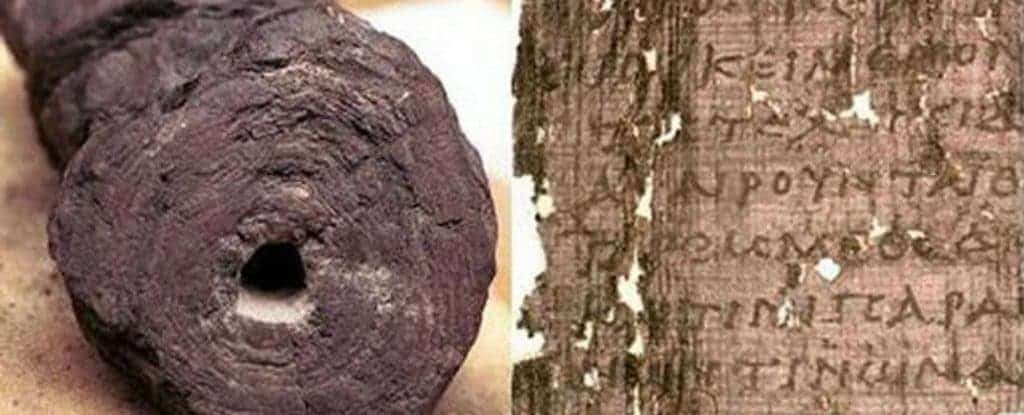In the year 79, the Vesuvius volcano erupted, wiping out the Roman cities of Pompeii and Herculaneum and killing at least 1,500 people. But while Pompeii usually takes the spotlight, it’s Herculaneum that may provide us with key information.

Archaeologists have found the so-called Herculaneum scrolls back in the 18th century, but have tried to decipher them in vain. The eruption was so violent that it covered the entire city in hot lava, basically freezing everything… by burning it. Needless to say, the scrolls were also damaged, though not completely scorched. Researchers have employed several techniques to help read the scroll collection but nothing seemed to work. Now, they’ve made a surprising discovery that may finally enable the deciphering: the scrolls were written with metallic ink, a technique that researchers didn’t even think existed back when the scrolls were penned.
Daniel Delattre, one of the study’s authors said in an interview with The Guardian:
“For nearly 2,000 years, we thought we knew everything, or almost everything, about the composition of antique ink used to write on papyrus. The highly specialised studies carried out at the European synchrotron show us that we must be wary of our ideas and that the ink also contained metal, notably lead in sizeable quantities.”
They made the discovery using an X-ray beam “100 billion times brighter than anything used in a hospital” from the European Radiation Synchrotron Facility. The beam still wasn’t strong enough to “see” the text, but it did offer some information on the ink and the scrolls themselves. That the ink is metallic is significant because it represents a contrast which can be studied, and it also shows just how many things we still don’t understand about Roman culture and technology.
“The highly specialised studies carried out at the European synchrotron show us that we must be wary of our ideas and that the ink also contained metal, notably lead in sizeable quantities.”
As for actually reading the text, there’s no fixed timeline on that, but with the constant rate at which technology is advancing means we may be able to do it in the foreseeable future.
The remains of about 332 bodies have been found at Herculaneum (300 in arched vaults discovered in 1980). The total number of casualties remains completely unknown. The papyri, containing a number of Greek philosophical texts, come from the only surviving library from antiquity that exists in its entirety. Most of the work discovered are associated with the philosopher and poet Philodemus of Gadara.






